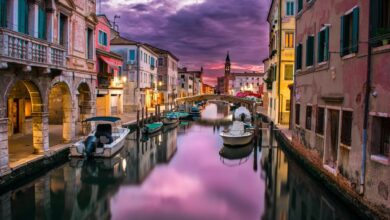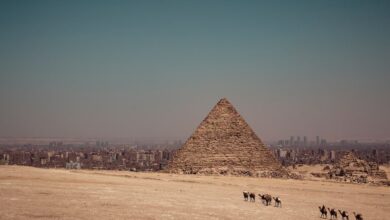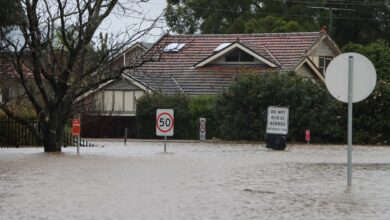The first signs of it are quiet–on message boards, in dimly-lit basements, or whispered discussions at local bars. Half-truths, grievances, and fears are all part of the story. It spreads online and gains momentum through secret videos, slogans and coded language. It then steps out into the open. Banners unfurl. Chants are raised. Uniforms parade down public streets. The anger, which was once a private matter, has now become a public spectacle. This is the story of the modern American hate movement, which has changed, adapted and expanded alarmingly in recent years.
Immigration is at the heart of this upsurge. Behind that issue is a darker reality, an agenda rooted in racial discrimination and white supremacy. White nationalists have found new life on the streets and in online forums, as well as in city parks with flags with swastikas.
This isn’t just a hate story, but how geography, fear and identity converged to give hatred new grounds to grow.

A Legacy of Hate: From 1959 to Present
The roots of America’s organised neo-Nazi movement can be traced back to the post-World War II years, but it was in 1959 that the ideology took on a formal structure. That year, George Lincoln Rockwell, a former U.S. Navy commander, founded the American Nazi Party (ANP) in Arlington, Virginia, just a stone’s throw from the monuments of democracy in Washington, D.C.
Rockwell, his supporters and other civil rights activists donned swastikas to salute Hitler at a time when they were marching in support of integration and racial equality. They used Nazi symbols and rhetoric to recruit, provoke and intimidate people, while preaching white supremacy and segregation. Media spectacles were made out of public demonstrations, such as marching through all-black areas or heckling civil rights events. The intention was to incite fear and increase racial divide.
Rockwell’s poison didn’t go away when he was killed in 1967. His ideology has mutated and splintered into many new forms in the United States.
National Socialist Movement rose out of his ashes and took his vision to modernise it for newer generations. The NSM was founded in 1974, and by the early 2000s, it had become one of the most prominent neo Nazi organisations in the United States. The NSM was based in Detroit, Michigan, a city that has been plagued by racial tensions and economic collapse for decades. It played on local resentments over immigration, crime, and job losses.
The NSM has organised rallies in recent years that purport to protest illegal immigration and crime, but are platforms for spreading white nationalist propaganda. Just last year, one such event was held in Washington, D.C.. It was a rally against immigration. Under the slogans of “protecting American Jobs” lies the same old exclusionary doctrine, wrapped up in patriotism and rooted in racism.
The Immigration Flashpoint
Immigration has become a popular topic for white nationalist movements, not because immigrants pose a real threat but because the narrative is powerful. Immigration is the perfect scapegoat for groups that have a racial goal. It allows them to turn economic, social, and cultural anxieties into racial fears.
Hate groups staged provocative demonstrations in cities such as Phoenix (Arizona), El Paso (Texas) and Tucson, where Latinos are a growing population. The hate groups chant, wave flags and demand closed borders, not out of concern for national safety, but to rally their supporters.
This rhetoric is well-known: “They are taking our jobs,” “They are changing our culture,” “We are being replaced.” These ideas echo an infamous conspiracy known as the “Great Replacement,” in which it’s falsely claimed that white people are systematically being replaced by immigration and multiculturalism. This theory is directly responsible for the mass shootings that occurred in Christchurch in New Zealand, and El Paso. It’s also gaining popularity in white nationalist circles in America.
Immigration is not a matter of policy for these groups. It’s all about identity. It’s all about protecting what they consider a “white home”, a concept that is rooted in exclusion and violence.
Skinheads & Street Soldiers
Some white nationalist groups dress in suits, while others sport leather jackets and swastikas. The racist Skinhead Movement grew in popularity during the 1980s and 90s. It imported the look of British far-right gangs to America. They became the backbone of the movement.

The white supremacy movement was intensified by groups like Volksfront, Hammerskins and Blood & Honour USA. They recruited in prisons and punk shows as well as in economically depressed rural communities where youths could be manipulated with visions of power and belonging.
These groups flourished in the Midwest, especially in states such as Ohio, Indiana and Illinois. Cities such as Cleveland, Dayton and were flashpoints. They had economic decline, racial conflict, and vulnerable populations.
The Ohio State Hooligans is a radical gang made up of neo-Nazi skinheads who openly call for violence. The Hooligans’ goals are more explicit than some older groups, who hide behind freedom of speech and legality. They have circulated flyers that call for a “race war”, and they’ve used social media to glorify violent acts. Their presence highlights the shift from propaganda into action, from hate speech to possible terrorism.
The Power of the 14 Words
White nationalist groups have mastered the art of propaganda. They are influenced by Nazi Germany’s techniques and know how to use symbols, slogans, and myths. The book burning has returned, not just metaphorically but literally. Reports have emerged of book burnings in rural Oregon, northern Idaho, and Upstate New York. These small gatherings were filmed and used as recruitment videos.
The acts often evoke Nazi rallies with their chanting, uniforms and flaming torches. The message is intended to intimidate and shock others, as well as rally those who are angry or alienated.
“14 words” is perhaps the most infamous slogan that captures this ideology.
“We must ensure the future of White children and our people.” “
These 14 words were coined by David Lane, a white supremacist and terrorist who was a member of the violent group the Order. They have now become a cornerstone for modern white nationalism. These words are found in tattoos, graffiti, online bios and even on license plates and usernames. It is a secret pledge of loyalty to a dark cause.
Mobilisation Across America: From the fringes to the frontlines
In recent years, the disturbing trend has not been just their survival but also their convergence. Many of these groups are now coordinated, from the clean-cut speakers of far-right thought tanks to the violent street gang thugs. They share the same rallying points, attend the same rallies and have the same goal: to create a racially divided America.
Charlottesville, Virginia, became a hotspot in 2017 when the “Unite the Right rally” took place. Heather Heyer was tragically murdered, but the rally revealed a new truth: hate groups will work together when the stakes are high.
Since then, cities such as Portland, Berkeley and Philadelphia have hosted demonstrations of various white nationalists and neo Nazi groups. They often clash with counter-protesters, leaving a trail of violence. They use social media to recruit, fundraise and mobilise even though platforms are cracking down on hate speech.
Here, geography is important. These rallies are often held in liberal cities, which they view as the battlegrounds of an ideological war. The real recruitment is often in rural counties, small towns and post-industrial suburban areas where there’s a lot of disillusionment.
White nationalists have relocated to places like Coeur d’Alene, Idaho or Kalispell, Montana or even parts of eastern Washington. These areas are not only ideologically aligned but also tactically advantageous: low population density and low law enforcement presence.
Resisting and Reckoning
This story is not without opposition. Communities across America are rising to combat the resurgence in hate.
Organisations such as the Southern Poverty Law Centre and Anti-Defamation League track and expose hate groups. They also offer legal assistance and help to identify the individuals who are behind them. Activists infiltrated forums of white nationalists, unmasked their leaders and disrupted planned events.
Montana residents responded to white nationalists who targeted a Jewish Family in Whitefish with public defiance, solidarity marches and unity. In Charlottesville, the community has rebuilt itself and continues to face its racial history with open dialogue.
Teachers, librarians and journalists all play an important role in educating the public on the dangers and signs of hatred, as well as ensuring the history, particularly the history of fascism, is not forgotten.

Conclusion: A Nation at the Crossroads
Its heart is the same, even though its face has changed. It is fueled by fear, feeds off division and uses flags and slogans as a disguise for its true intentions. Geography tells us more than just where hatred thrives. It also shows where hope is rising in response.
The United States is at a crossroads. From border towns to cities in the heartland, from Southern backroads and Eastern college campuses. It is no longer enough to simply reject hatred. We must also understand, expose, and demolish it on all levels: geographical, ideological, and generational.
The story of American hatred is not only about those who march in torches, but also about what we do to them when they visit our town, speak to our community, or whisper to our youth online.
What we do next will determine the future of all American children – not just those who are white.




